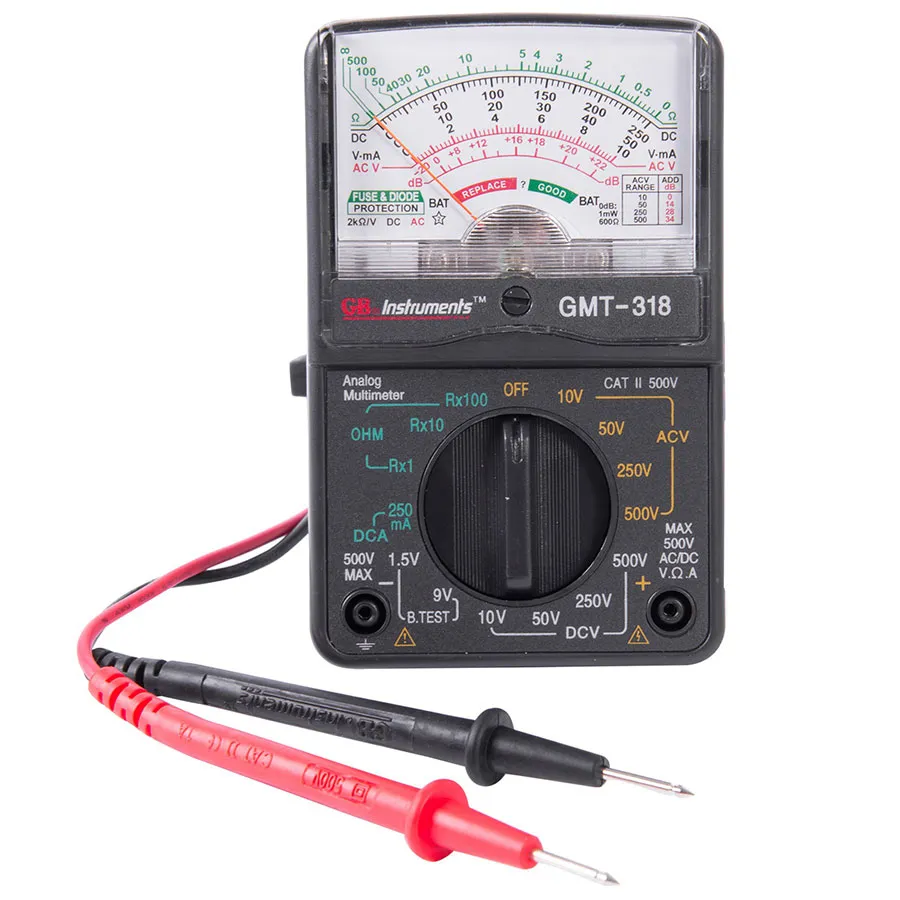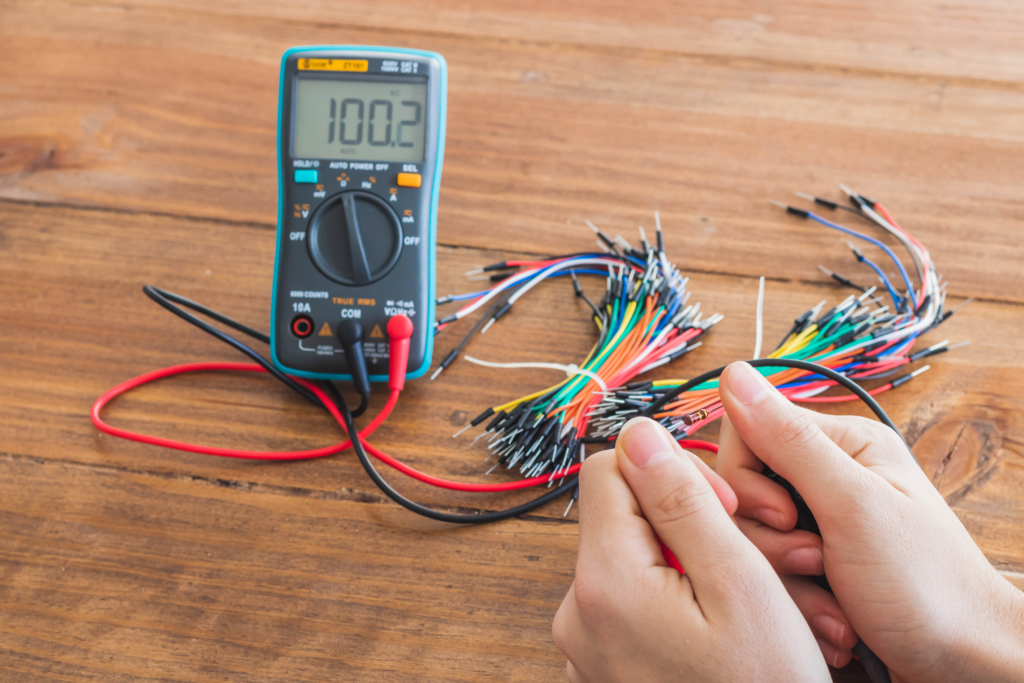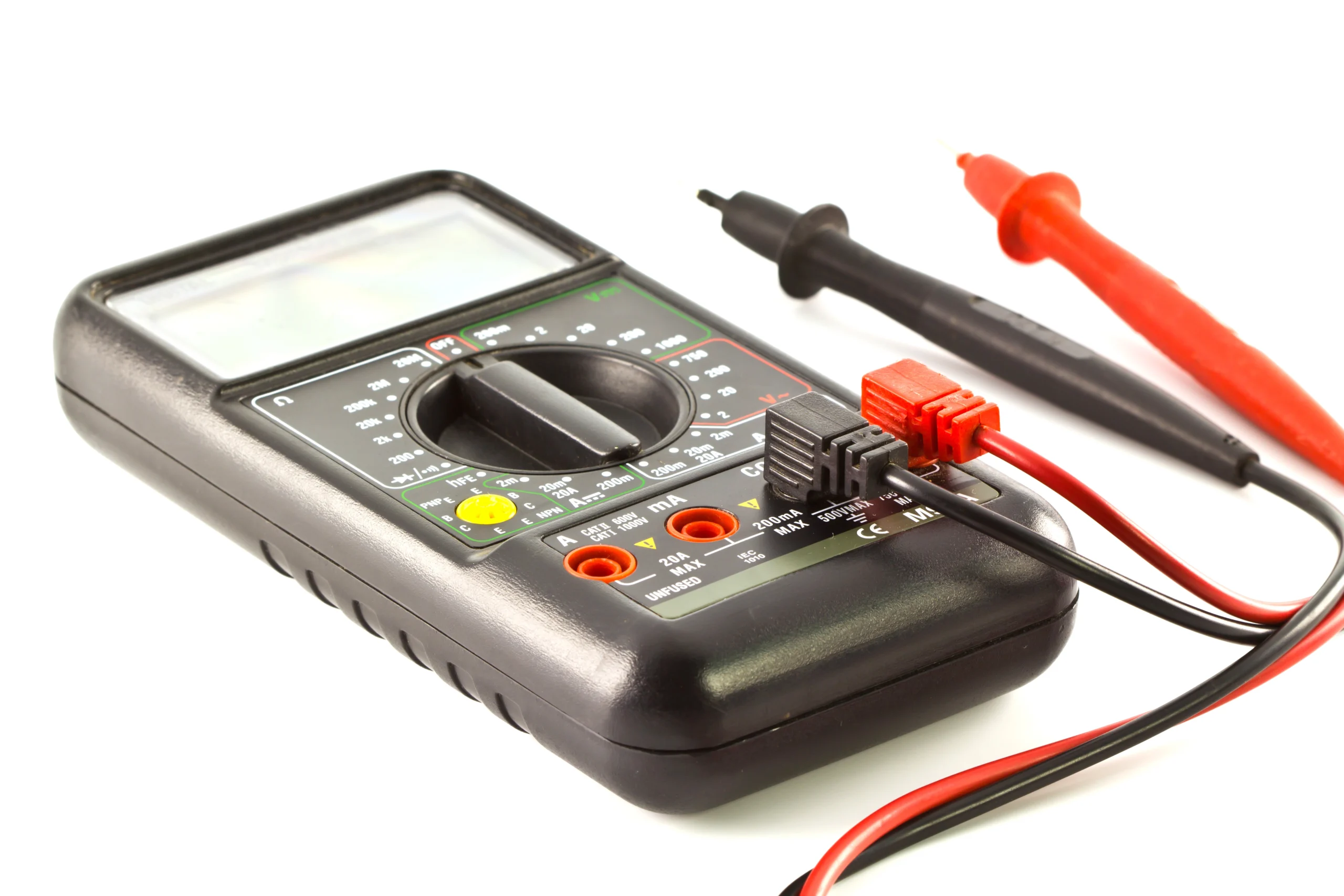How to Choose the Right Multimeter for Your Electrical Projects
Introduction – Why the Right Multimeter Matters
Picture this: You’re halfway through diagnosing a fault in your home wiring. You connect your multimeter, expecting clarity, but the reading is all over the place. That moment of hesitation — is it the wiring, or is your tool misleading you?
Choosing the right multimeter isn’t about brand names or flashy extras. It’s about accuracy, reliability, and making sure your measurements are worth trusting. The wrong choice can waste your time, cost you money in replacements, and in the worst case, put your safety at risk.
By the end of this guide, you’ll know exactly what type of multimeter suits your needs, the features to prioritise, and how to pick one that won’t let you down.
Table of Contents
What Is a Multimeter and Why It’s Essential
A multimeter is your go-to instrument for checking electrical measurements like:
- Voltage (AC and DC)
- Current (amps)
- Resistance (ohms)
- Continuity (whether a circuit is complete)
It’s not just for electricians. If you repair electronics, maintain vehicles, work on DIY electrical projects, or simply want to troubleshoot household issues, a multimeter is a must-have.
A good multimeter gives you confidence in your work. A bad one? It leaves you second-guessing every step.
Types of Multimeters – Picking the Right Style for You
Analog Multimeters
- Pros: No batteries needed for most measurements, responsive needle movement, useful for spotting gradual changes in readings.
- Cons: Harder to read precisely, less durable in rough conditions.
- Best For: Students learning electrical theory, or situations where trends matter more than exact numbers.

Digital Multimeters (DMMs)
- Pros: Clear digital display, higher accuracy, additional functions (auto-ranging, data hold, backlight).
- Cons: Needs batteries, can be more delicate.
- Best For: Most home users, professionals, and hobbyists.

Comparison Table:
| Type | Advantages | Limitations | Ideal User |
|---|---|---|---|
| Analog | Simple, battery-free, shows trends | Less precise, harder to read | Training, vintage electronics |
| Digital | Accurate, easy to read, more features | Battery-dependent, can be fragile | Everyday users, pros |
Key Features to Look for in a Multimeter
When scrolling through AliExpress or your local hardware store listings, it’s easy to be distracted by marketing terms. Focus instead on these essentials:
Measurement Functions
Make sure your multimeter can measure:
- AC/DC voltage
- AC/DC current
- Resistance
- Continuity (with audible beep)
- Diode testing
Accuracy and Range
- Look for ±(0.5% or better) accuracy for professional-grade work.
- Wider range = more versatility.
Display & Readability
- Large digits, backlighting for dim spaces, clear layout.
Auto-Ranging vs. Manual Ranging
- Auto-ranging: no need to select the measurement scale manually. Great for quick checks.
- Manual ranging: more control for advanced troubleshooting.
True RMS Capability
If you’ll be measuring complex or non-sine wave signals (common with modern electronics), True RMS ensures your readings are accurate.
Safety Ratings – Don’t Overlook This
Electrical tools must meet safety standards, and multimeters are no exception.
Understanding CAT Ratings
- CAT I & II: Best for electronics, household appliances.
- CAT III: Suitable for fixed installations, distribution wiring.
- CAT IV: For high-energy outdoor and industrial environments.
Build Quality & Safety Features
Look for:
- Overload protection
- Fused inputs
- Insulated test leads
- Non-slip casing
A tool without the right safety rating isn’t worth the risk — especially if you work around mains power.
Budget vs. Premium Multimeters – Where Do You Fit?
Price doesn’t always mean better, but your needs should guide your budget.
| Price Range | Typical Features | Ideal User |
|---|---|---|
| Under $20 | Basic voltage/resistance testing, CAT I/II | Beginners, DIYers |
| $20–$50 | Auto-range, True RMS, backlight, CAT III | Hobbyists, light pros |
| $50+ | High CAT ratings, data logging, Bluetooth, temp probes | Professionals |
If you only use a multimeter occasionally, a well-reviewed budget model is fine. If your income or safety depends on it, invest in durability and advanced functions.
Top Multimeter Models to Consider (AliExpress Picks)
- UNI-T UT33D+ – Affordable, auto-ranging, CAT II safety.
- ANENG AN8008 – True RMS, slim design, backlit display. check it here
- Mustool MT108T – CAT III rating, Bluetooth data logging, temperature probe.
Tip: Always check product reviews, ratings, and the number of orders before buying. On AliExpress, this is the fastest way to spot reliable sellers.
Maintaining Your Multimeter for Longevity
You don’t want your multimeter failing mid-project. Keep it in top shape by:
- Storing it in a dry, dust-free case.
- Replacing batteries promptly.
- Using the right jacks for each function.
- Sending it for calibration annually if you’re a pro user.
FAQ – Multimeter Buying Guide
Q: What is the most important feature in a multimeter?
A: Accuracy and the right safety rating for your intended use.
Q: Should I choose auto-ranging or manual?
A: Auto-ranging is easier for beginners; manual gives experienced users more control.
Q: Is True RMS worth it?
A: Yes, if you measure electronics, variable-speed motors, or anything with irregular waveforms.
Q: Can cheap multimeters be reliable?
A: For basic home use, yes — if you pick a reputable brand with good reviews.
Q: Which multimeter is best for home use?
A: A simple digital multimeter with CAT II rating and auto-ranging is enough.
Conclusion – Choose Smart, Work Confident
Your multimeter is more than just another tool in your kit — it’s your eyes into the invisible world of electricity. Choosing the right one means better results, fewer mistakes, and safer work.
Whether you’re a weekend DIYer or a seasoned electrician, the right choice depends on matching your needs, your budget, and your safety requirements.


